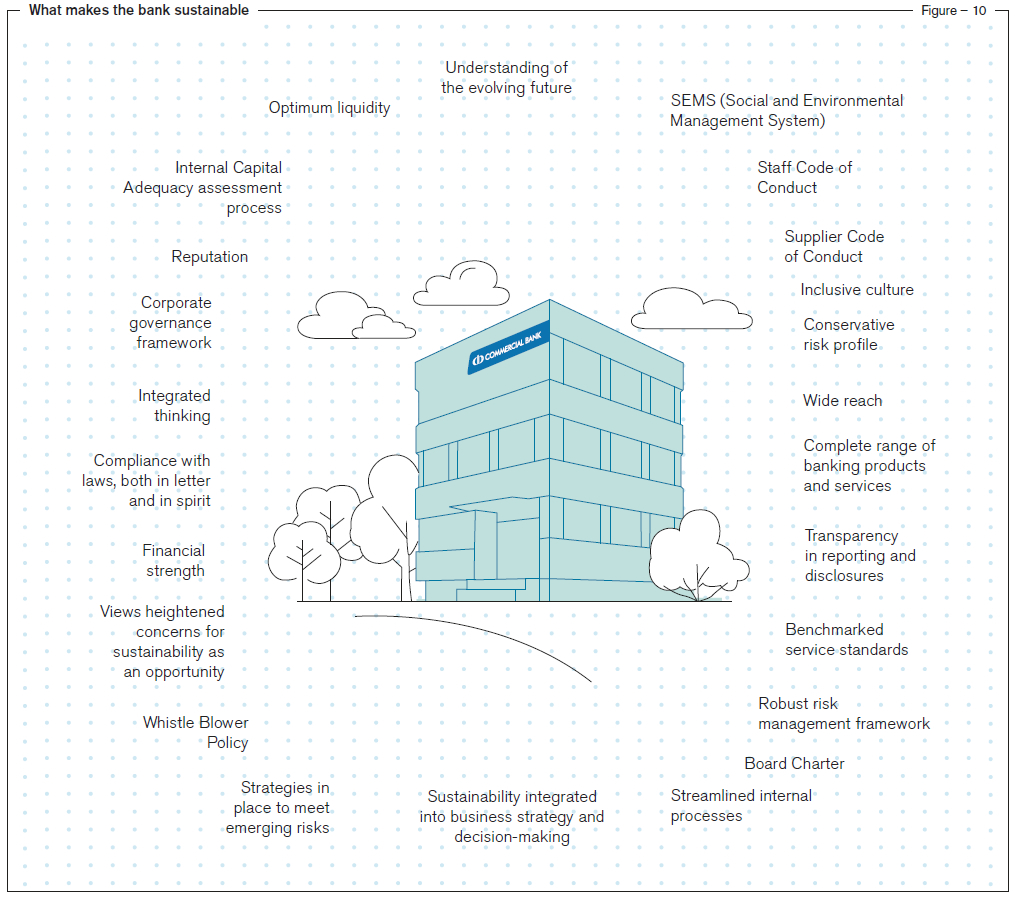- Introduction
- Strategic
Report- Chairman’s Statement
- Managing Director’s Review
- Board of Directors and Profiles
- Our Value Creation Process – Business Model
- Connecting with Stakeholders
- Materiality Matters
- Risk Review
- Managing Financial Capital
- Funding and Liquidity Management
- Strategic Priorities and Responses
- Outlook for 2018 and Beyond
- What makes the Bank Sustainable
- Management Discussion
and Analysis - Governance and
Risk Management- How We Govern
- Corporate Management and Profiles
- Senior Management
- Board Subcommittee Reports
- Board Audit Committee Report
- Board Integrated Risk Management Committee Report
- Board Nomination Committee Report
- Board Human Resources and Remuneration Committee Report
- Board Related Party Transactions Review Committee Report
- Board Credit Committee Report
- Board Investment Committee Report
- Board Technology Committee Report
- Annual Report of the Board of Directors
- Statement of Directors’ Responsibility
- Directors’ Statement on Internal Control
- Assurance Report on Internal Control
- Managing Director’s and Chief Financial Officer’s
Statement of Responsibility - Directors’ Interest in Contracts with the Bank
- Managing Risk: An Overview
- Financial
Reports- Financial Calendar – 2017
- Independent Auditors’ Report
- Financial Statements Highlights – Bank
- Financial Statements – Table of Content
- Income Statement
- Statement of Profit or Loss and Other
Comprehensive Income - Statement of Financial Position
- Statement of Changes in Equity – Group
- Statement of Changes in Equity – Bank
- Statement of Cash Flows
- Notes to the Financial Statements
- Notes to the Financial Statements – General (Notes 1 -11)
- Notes to the Financial Statements – Income Statement (Notes 12 -24)
- Notes to the Financial Statements – Statement of Financial Position: Assets (Notes 25 -48)
- Notes to the Financial Statements – Statement of Financial Position: Liabilities and Equity (Notes 43 -58)
- Notes to the Financial Statements – Other Disclosures (Notes 59 -70)
- Annexes
- Supplementary
Information- Our Sustainability Footprint
- Decade at a Glance
- Income Statement (US Dollars)
- Statement of Financial Position (US Dollars)
- Correspondent Banks and Agent Network
- Group Structure
- Glossary of Financial and Banking Terms
- Acronyms & Abbreviations
- Alphabetical Index
- Notice of Meeting – 49th Annual General Meeting
- Circular to the Shareholders on the Final Dividend for 2017
- Notice of Meeting – Extraordinary General Meeting
- Circular to Shareholders on Proposed Debenture Issue
- Corporate Information




